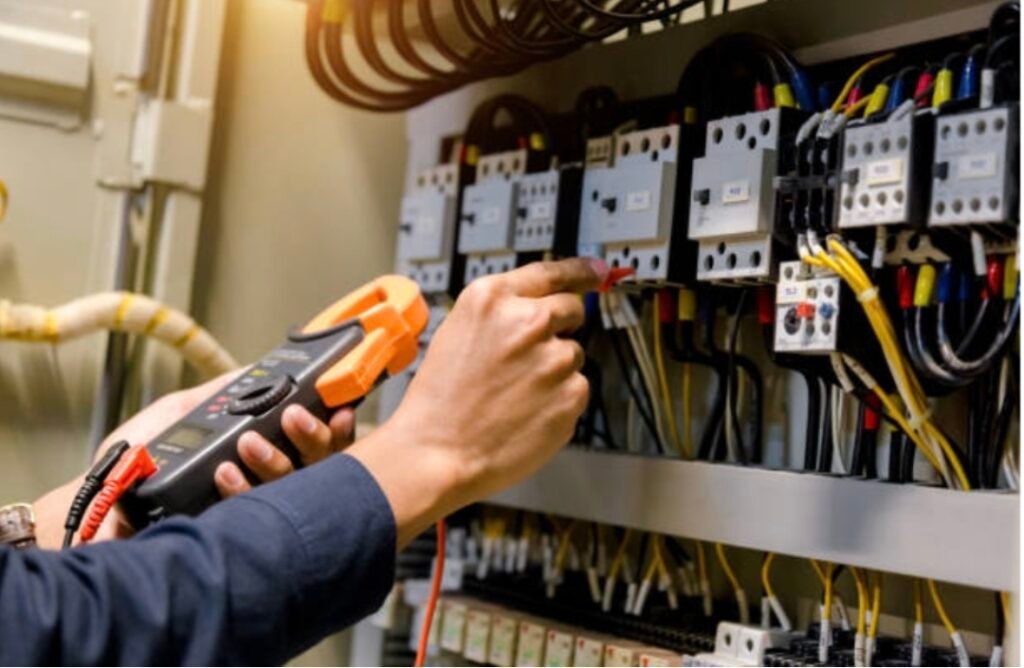Commercial electrical installations are crucial for powering a wide range of equipment and systems in businesses, offices, factories, and retail spaces. These installations often involve complex wiring, systems integration, and high power demands, making them more challenging than residential electrical work. While commercial electrical systems are designed to meet the unique needs of a business, they come with their own set of challenges. Understanding these challenges is essential for ensuring that commercial projects are completed safely, efficiently, and up to code. In this article, we’ll explore some of the most common challenges encountered in commercial electrical installations and how commercial electricians address them.
1. Complex Wiring and Power Distribution
One of the primary challenges in commercial electrical installations is dealing with the complexity of wiring and power distribution. Commercial properties require multiple circuits to handle large loads of power for equipment, lighting, HVAC systems, and other essential infrastructure. In contrast to residential installations, which typically have fewer circuits and power requirements, commercial systems must be designed to distribute electricity across the entire building, sometimes across multiple floors or zones.
Commercial electricians must ensure that wiring is appropriately sized and distributed to prevent overloading circuits, reduce the risk of electrical fires, and meet code requirements. Additionally, they need to design the system so that it allows for easy maintenance and future upgrades. The use of three-phase systems, which are more efficient for commercial applications, further complicates the wiring setup. Managing this complexity while ensuring safety and efficiency is one of the biggest challenges in commercial electrical installations.
2. Compliance with Local Codes and Regulations
Another significant challenge is ensuring that the electrical installation complies with local building codes and regulations. Commercial electrical work is subject to strict codes that govern safety, capacity, and design. These codes are regularly updated to reflect advancements in technology and safety standards. For instance, the National Electrical Code (NEC) provides a set of standards for electrical installations in the United States, and local municipalities may have additional requirements.
Commercial electricians must stay up to date with these codes and regulations, which can vary depending on the location and type of business. Ensuring compliance often involves detailed planning, inspections, and documentation. Failure to meet code requirements can result in costly delays, fines, and the need for expensive rework. Therefore, experienced commercial electricians must be well-versed in the regulatory landscape and ensure that every aspect of the installation is code-compliant.
3. Managing High Power Loads and Energy Efficiency
Commercial buildings often require high power loads to support machinery, lighting systems, computers, HVAC units, and other equipment. Managing these high power demands without overloading the system or risking outages is a significant challenge. Proper load balancing and power distribution are key to maintaining a reliable electrical system in a commercial setting.
Moreover, businesses are increasingly prioritizing energy efficiency as part of their sustainability efforts. This can involve integrating energy-efficient lighting, heating, and cooling systems, or adopting renewable energy sources like solar panels. Designing electrical installations that are both capable of handling high power demands and optimized for energy efficiency can be complex and requires commercial electricians with expertise in energy-efficient technologies and systems.
4. Coordination with Other Trades
In commercial electrical installations, coordination with other trades, such as plumbers, HVAC technicians, and construction workers, is often necessary. Electrical systems must be integrated with plumbing, ventilation, and other mechanical systems, which can lead to conflicts if not managed properly. For example, electrical wiring must avoid interfering with plumbing pipes or ducts, and spaces must be left for necessary connections and access points.
This coordination requires good communication and scheduling between contractors to ensure that the electrical system is installed correctly without hindering other work. Commercial electricians must be able to work as part of a team to minimize delays and ensure that all systems function properly when completed.
5. Limited Space for Wiring and Equipment
Many commercial spaces, especially older buildings, have limited room for installing electrical systems. This can be especially challenging when trying to fit electrical panels, transformers, circuit breakers, and wiring into cramped or difficult-to-access areas. Poorly designed layouts or insufficient space can complicate the installation process, increase labor costs, and lead to inefficient systems.
Commercial electricians often need to get creative when designing the layout of the electrical system, especially in older buildings where existing infrastructure may need to be modified to accommodate modern electrical needs. Retrofitting older buildings to meet current electrical standards while ensuring safety and functionality can be one of the more challenging aspects of commercial electrical installations.
6. Safety Concerns and Hazard Management
Electrical installations, by their nature, involve a range of safety risks, and commercial electricians must take great care to ensure that the work is performed safely. These risks include electrical shock, fires, and injury from working in confined spaces or with heavy equipment. Proper safety measures, including the use of personal protective equipment (PPE), are essential to minimize these risks.
Moreover, commercial electricians must manage the potential hazards posed by the building’s electrical systems, such as exposed wiring, faulty grounding, or outdated equipment. Ensuring the safety of workers, the property, and the future occupants of the building requires a careful approach to installation and thorough testing after the job is completed. Addressing safety concerns proactively is one of the most important challenges that commercial electricians face during installations.
7. Communication with Clients and Project Managers
Throughout the course of a commercial electrical installation, effective communication with clients and project managers is essential. The scope of the work, project deadlines, and cost considerations all need to be clearly understood by all parties involved. Miscommunication can lead to delays, unexpected costs, or dissatisfaction with the final results.
Commercial electricians must keep all stakeholders informed about the progress of the project, any challenges encountered, and any changes that may affect the overall timeline or cost. They must also be prepared to provide updates, answer questions, and offer solutions to any issues that arise during the installation.
Conclusion
Commercial electrical installations are essential for the smooth operation of businesses, but they come with their own set of unique challenges. From dealing with complex wiring systems and ensuring compliance with regulations to managing high power loads and coordinating with other trades, commercial electricians face a variety of obstacles. By addressing these challenges through careful planning, expert knowledge, and effective communication, commercial electricians can ensure that electrical systems are installed safely, efficiently, and reliably. Whether you’re working on a new build or upgrading an existing system, it’s important to hire experienced commercial electricians who can navigate these challenges and deliver a high-quality electrical system that meets the needs of your business.






